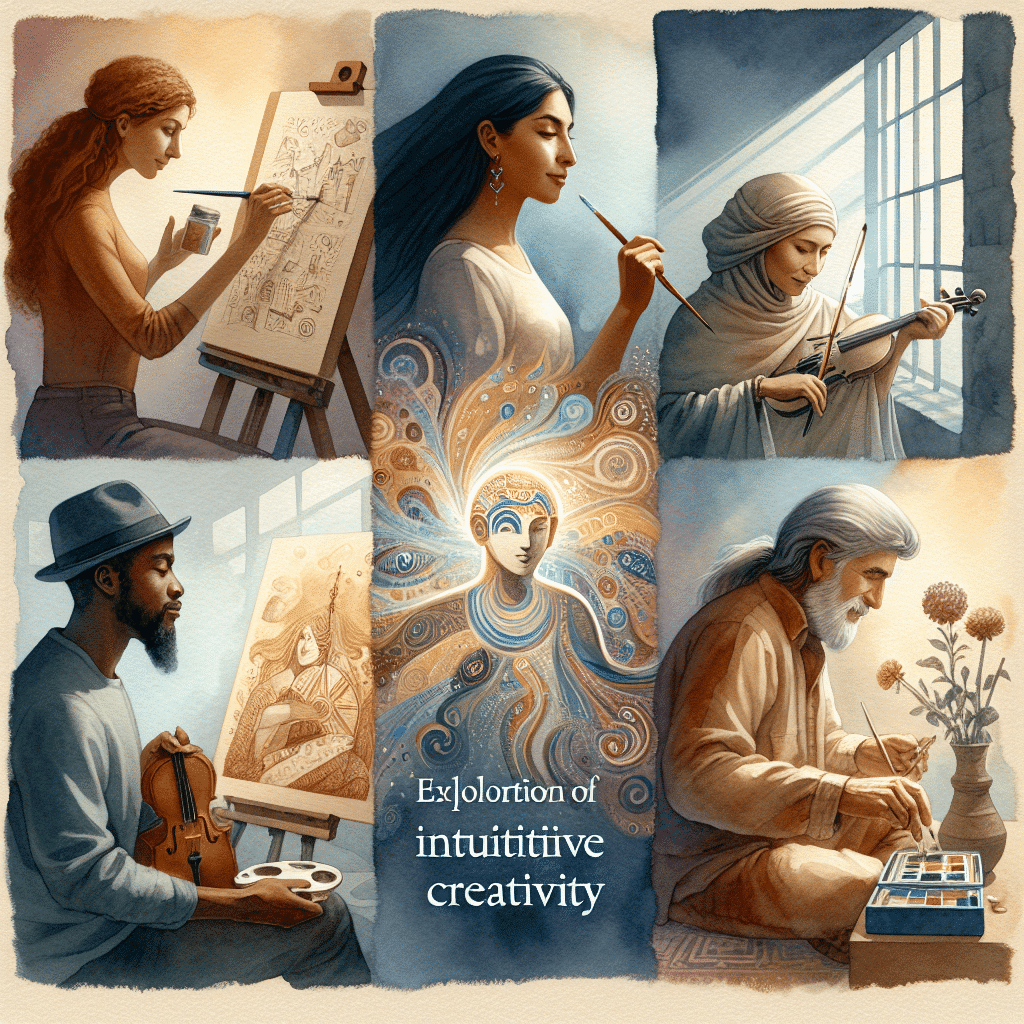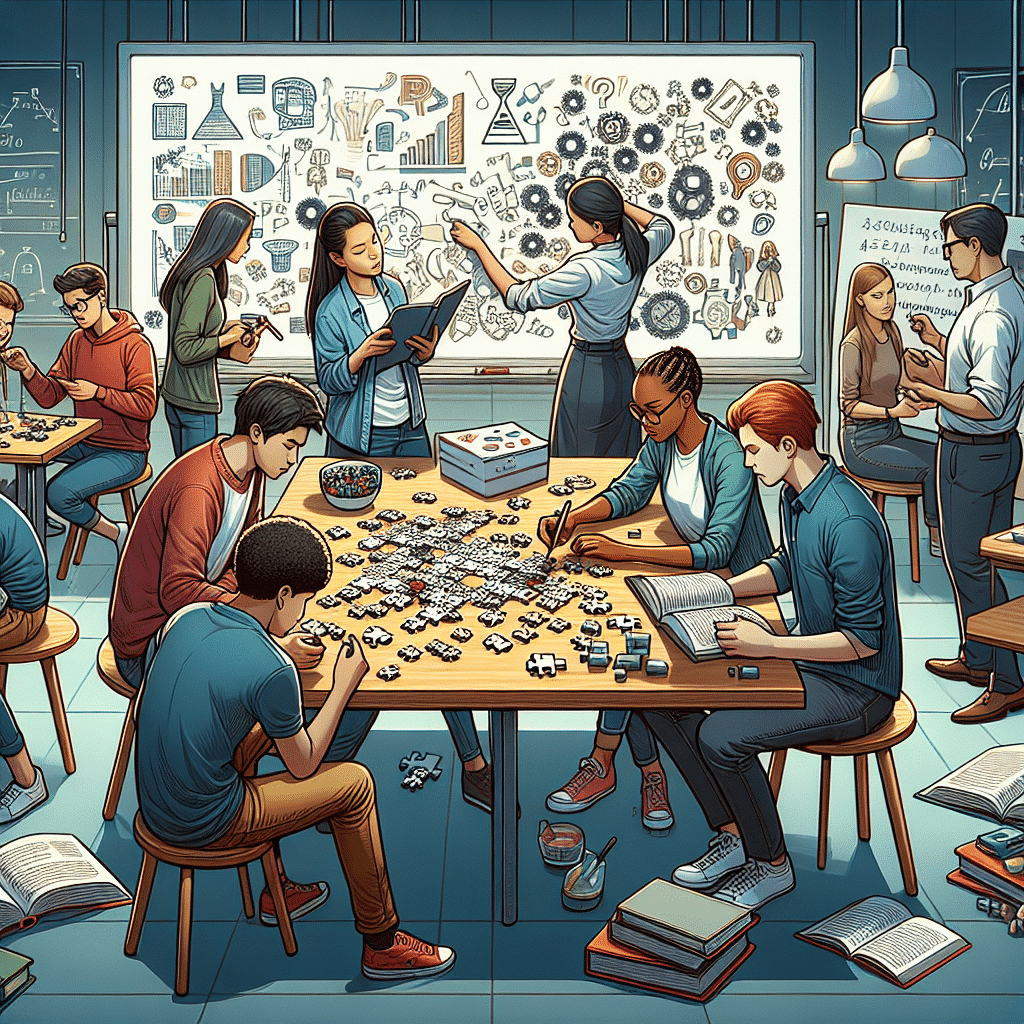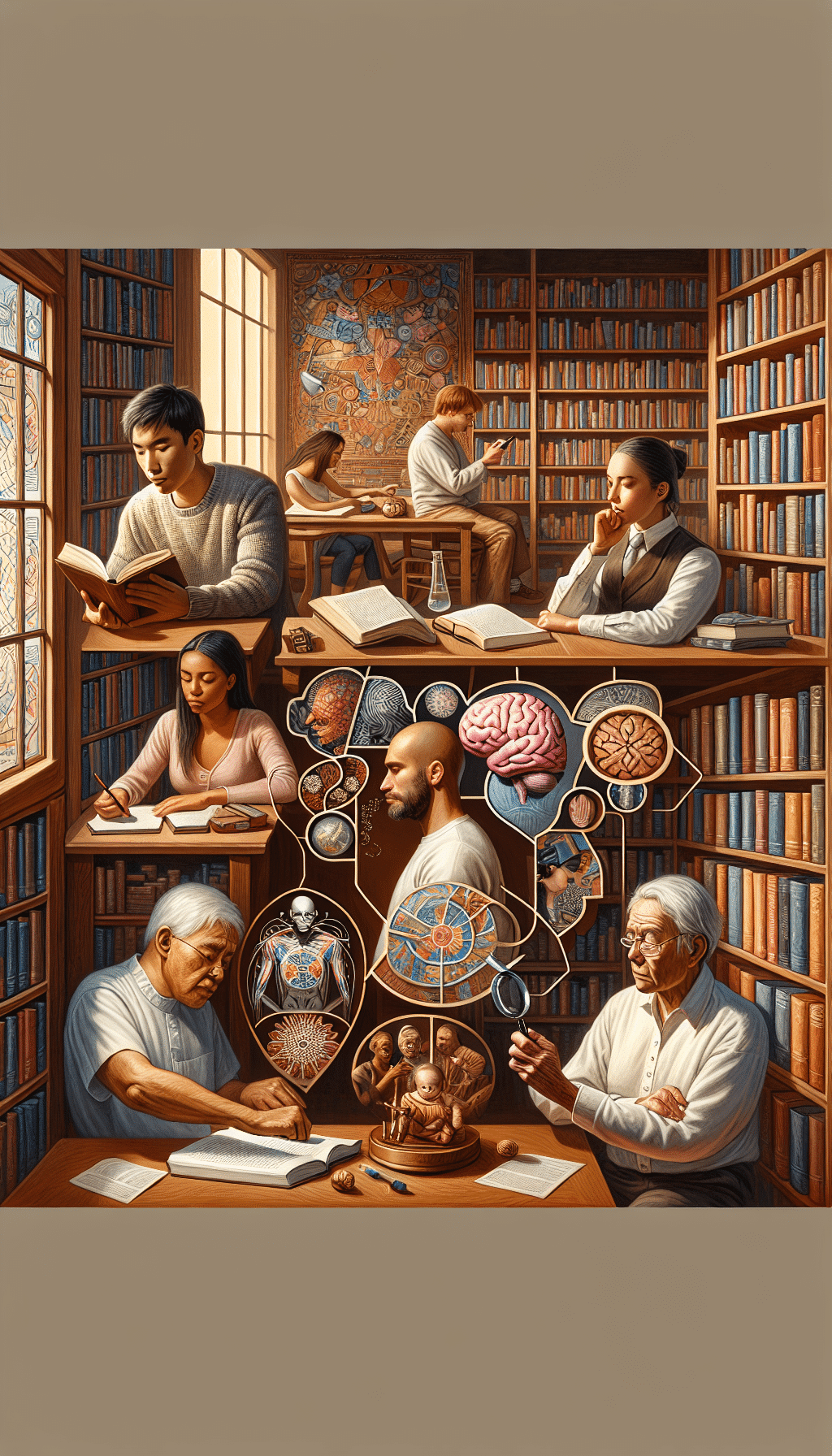
Overview of Intuitive Approaches to Creativity
Intuition plays a significant role in the creative process, allowing individuals to tap into their subconscious mind and uncover unique and innovative ideas. Intuitive approaches to creativity involve relying on instinct, gut feelings, and hunches to foster out-of-the-box thinking. This article will explore the benefits of intuitive thinking in creativity, techniques for tapping into intuition for creative inspiration, integrating intuition with logic for innovative solutions, and how to overcome challenges and develop intuition for enhanced creativity.
Benefits of Intuitive Thinking in Creativity
Intuitive thinking plays a crucial role in the creative process. It allows individuals to tap into their inner sense of knowing and connect with ideas, concepts, and solutions that may not be readily apparent through logical reasoning alone. By incorporating intuitive approaches to creativity, individuals can experience the following benefits:
- Expanded Possibilities: Intuitive thinking opens up a world of possibilities by exploring unconventional and uncharted territories. It allows creative individuals to go beyond the limitations of logical thinking and consider new and innovative ideas or approaches.
- Enhanced Problem-solving: Intuition enables individuals to approach complex problems from a fresh perspective. By tapping into their intuitive instincts, creative thinkers can often arrive at unique and creative solutions that may not be apparent through traditional analytical methods.
- Efficiency and Flow: Intuitive thinking can lead to a state of flow where ideas and inspiration effortlessly come together. This flow state enhances productivity and allows individuals to access their creative potential more readily, resulting in a more efficient and enjoyable creative process.
- Innovation and Originality: Intuition is a powerful tool for fostering innovation and originality. By trusting their instincts, creative individuals can break away from traditional approaches and create new, groundbreaking ideas or solutions that have the potential to make a significant impact.
- Enhanced Decision-making: Intuition can guide individuals in making decisions that align with their true creative vision. By relying on their intuitive senses, creative thinkers can make choices that feel authentic and resonate with them at a deeper level, leading to more meaningful and fulfilling outcomes.
Incorporating intuitive thinking into the creative process not only enhances the quality of ideas and solutions but also promotes a sense of personal fulfillment and satisfaction. It encourages individuals to trust their creative instincts and explore unique paths, ultimately leading to more authentic and impactful creative work.
Techniques for Tapping into Intuition for Creative Inspiration
Intuition plays a crucial role in the creative process, allowing individuals to tap into their subconscious to generate novel and imaginative ideas. By harnessing intuitive thinking, we can enhance our creativity and unlock new levels of innovation. Here are some techniques to help tap into your intuition for creative inspiration:
Meditation and Mindfulness
Practicing meditation and mindfulness can quiet the mind and create space for intuitive ideas to surface. By cultivating a state of relaxation and focus, you can access deeper levels of creativity and allow intuitive thoughts to emerge.
Engaging in Creative Activities
Engaging in activities such as painting, writing, or playing an instrument can stimulate the intuitive mind. These creative outlets enable individuals to bypass the logical thinking process and tap into their unconscious mind, leading to innovative insights and ideas.
Connecting with Nature
Spending time in nature can help calm the mind and open up channels to intuition. Whether it’s going for a walk in the woods, sitting by the ocean, or simply gazing at the stars, nature has a way of triggering intuitive thinking and inspiring creative ideas.
Journaling and Free Writing
Keeping a journal and engaging in free writing can be effective ways to access your intuition. By allowing your thoughts to flow freely onto the page without judgment or analysis, you can tap into your deeper wisdom and gain insights that you may not have been aware of.
Trusting and Following Gut Feelings
Intuition often presents itself as a gut feeling or a hunch. Learning to trust these feelings and following them without hesitation can lead to breakthrough ideas and innovative solutions. By bypassing analytical thinking and relying on your intuition, you can access unconventional and out-of-the-box ideas.
Cultivating Curiosity and Openness
Approaching the world with curiosity and openness can help you tap into your intuition. By actively seeking new experiences, asking questions, and embracing uncertainty, you create the space for intuitive insights to emerge. Cultivating an attitude of curiosity allows you to see things from different perspectives and make connections that can fuel creative thinking.
By incorporating these techniques into your creative process, you can tap into your intuition for enhanced creativity and innovation. Remember, intuition is a powerful tool that can guide you to unique and imaginative ideas. Embrace it and let it fuel your creative endeavors.

Integrating Intuition with Logic for Innovative Solutions
Intuition alone is not enough to generate innovative solutions. It needs to be combined with logical thinking to create effective and practical outcomes. By integrating intuition with logic, individuals can harness their creative potential and generate innovative solutions.
Rational Evaluation of Ideas
While intuitive thinking allows for free-flowing and unstructured ideas to emerge, it is crucial to subject these ideas to rational evaluation. This involves critically assessing the feasibility and practicality of the ideas generated. By analyzing the strengths and weaknesses of each idea, individuals can identify potential roadblocks and refine their concepts to enhance creativity and innovation.
Utilizing Data and Research
Logical thinking involves a systematic and analytical approach, relying on data and research to support decision-making. In the realm of creativity, data-driven logic can inform the development and refinement of ideas. By collecting relevant data, conducting market research, and analyzing trends, individuals can make informed decisions that enhance the viability and impact of their creative solutions.
Iterative Problem-Solving
Integrating intuition with logic requires an iterative problem-solving approach. This means continuously refining ideas and solutions based on feedback and learning from failures. By embracing a growth mindset, individuals can use logic to analyze the root causes of problems, identify potential improvements, and iterate on their creative solutions. The combination of intuitive thinking and logical evaluation allows for the development of innovative and effective strategies.
Collaborative Decision-Making
Integrating intuition with logic is not a solo endeavor. Collaborative decision-making involves leveraging the diverse perspectives and expertise of a team to generate innovative solutions. By valuing different viewpoints and engaging in constructive discussions, teams can harness the power of intuitive and logical thinking to unlock creative potential. Collaboration encourages the synthesis of multiple ideas and allows for the exploration of unconventional approaches.
Cultivating Mindfulness and Reflection
Mindfulness and reflection are essential for integrating intuition with logic in the creative process. Taking time to pause, reflect, and tune into their intuition enables individuals to tap into their inner wisdom and generate fresh insights. By practicing mindfulness techniques, such as meditation or journaling, individuals can enhance their self-awareness, improve their ability to combine intuition with logic, and achieve higher levels of creativity and innovation.
In conclusion, integrating intuition with logic is key to harnessing the power of creativity. By subjecting intuitive ideas to rational evaluation, utilizing data and research, adopting an iterative problem-solving approach, embracing collaborative decision-making, and cultivating mindfulness and reflection, individuals can unlock their creative potential and generate innovative solutions.
Overcoming Challenges and Developing Intuition for Enhanced Creativity
Developing and harnessing intuition for enhanced creativity can be a challenging process. However, with the right mindset and strategies, individuals can overcome these challenges and unlock their creative potential. Here are some effective techniques to help overcome challenges and develop intuition for enhanced creativity:
1. Embrace Uncertainty
One of the biggest challenges in developing intuition is the fear of making mistakes or not knowing the right answer. To overcome this, it is crucial to embrace uncertainty and allow oneself to explore different possibilities without the fear of failure. By accepting ambiguity and recognizing it as an opportunity for growth, individuals can tap into their intuitive thinking and generate innovative ideas.
2. Practice Mindfulness
Mindfulness, or the act of being fully present in the moment, can greatly enhance one’s ability to tap into their intuition. By becoming more aware of their thoughts, emotions, and sensations, individuals can develop a deeper understanding of their intuition and how it influences their creative process. Regular mindfulness practices, such as meditation and deep breathing exercises, can help quiet the mind, increase focus, and create space for intuitive insights to emerge.
3. Engage in Creative Activities
Engaging in creative activities outside of one’s usual creative pursuits can help develop intuition by encouraging a broader perspective and expanding the creative repertoire. Exploring new hobbies, such as painting, dancing, or playing a musical instrument, can stimulate different parts of the brain and foster creative connections that can be applied to other areas of life. These creative activities provide an opportunity to tap into intuition in a new and unfamiliar context, fostering its development and strengthening its application in other creative endeavors.
4. Seek Different Perspectives
One of the challenges of relying solely on intuition is the potential for bias or limited perspectives. To overcome this, it is essential to seek out different perspectives and diverse sources of inspiration. This could include collaborating with others, seeking feedback and input from trusted colleagues or mentors, or exploring different cultures and perspectives through travel or immersions. Exposing oneself to diverse perspectives and experiences can help expand intuition and facilitate the generation of fresh and innovative ideas.
5. Learn from Failure
Failure is an inevitable part of the creative process, and instead of viewing it as a setback, it should be seen as an opportunity for growth and learning. Embracing failure and analyzing the reasons behind it can help individuals identify patterns, assumptions, and limitations in their thinking, leading to a greater understanding of their intuition. By learning from failure, individuals can refine their intuitive thinking, take calculated risks, and create more innovative and successful outcomes.
Developing intuition for enhanced creativity is an ongoing process that requires practice, reflection, and a willingness to step outside of one’s comfort zone. By embracing uncertainty, practicing mindfulness, engaging in creative activities, seeking different perspectives, and learning from failure, individuals can overcome challenges and cultivate their intuition, unlocking their creative potential and generating innovative ideas.

Summary
Intuitive approaches to creativity offer a unique perspective that can enhance the creative process and lead to innovative solutions. By tapping into our intuition, we can access a deeper level of creativity and come up with ideas that are not bound by conventional thinking. This approach allows us to think outside the box and consider previously unexplored possibilities.
Through intuitive thinking, we can benefit from enhanced problem-solving abilities, increased flexibility, and a heightened sense of curiosity. Intuition allows us to make connections that may not be immediately obvious and can lead to breakthrough ideas. By trusting our gut feelings and allowing ourselves to explore new ideas, we can unlock our full creative potential.
There are various techniques that can help us tap into our intuition for creative inspiration. These include mindfulness practices, journaling, meditation, and engaging in activities that promote relaxation and reflection. By taking the time to quiet our minds and listen to our inner voice, we can access a wealth of creative ideas and insights.
Integrating intuition with logic is essential to ensure that our creative ideas are feasible and practical. While intuition can provide us with innovative solutions, it is important to subject these ideas to rational analysis to evaluate their viability. Combining both intuition and logic allows us to strike a balance between creativity and practicality, leading to solutions that are both innovative and implementable.
However, it is important to acknowledge the challenges that may arise in developing and trusting our intuition. Society often values analytical thinking over intuition, making it difficult to fully embrace and trust our intuitive abilities. Overcoming these challenges involves cultivating self-awareness, practicing mindfulness, and developing confidence in our own intuitive insights.
In conclusion, intuitive approaches to creativity offer a valuable tool for enhancing the creative process. By tapping into our intuition, we can unleash our full creative potential and develop innovative ideas that challenge the norm. By combining intuition with logic and overcoming societal biases, we can harness the power of intuitive thinking to bring about groundbreaking solutions.






